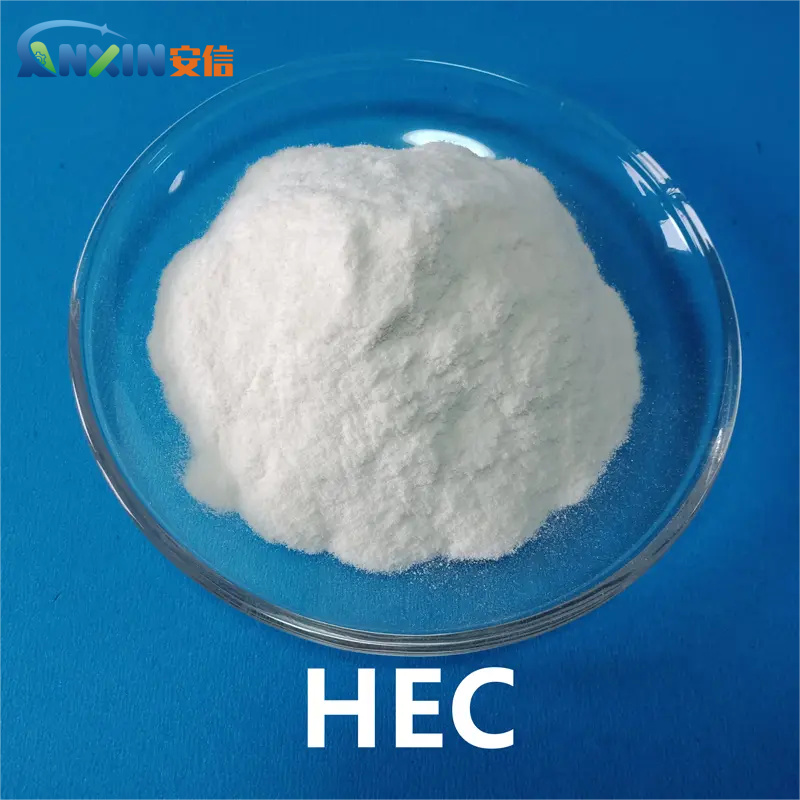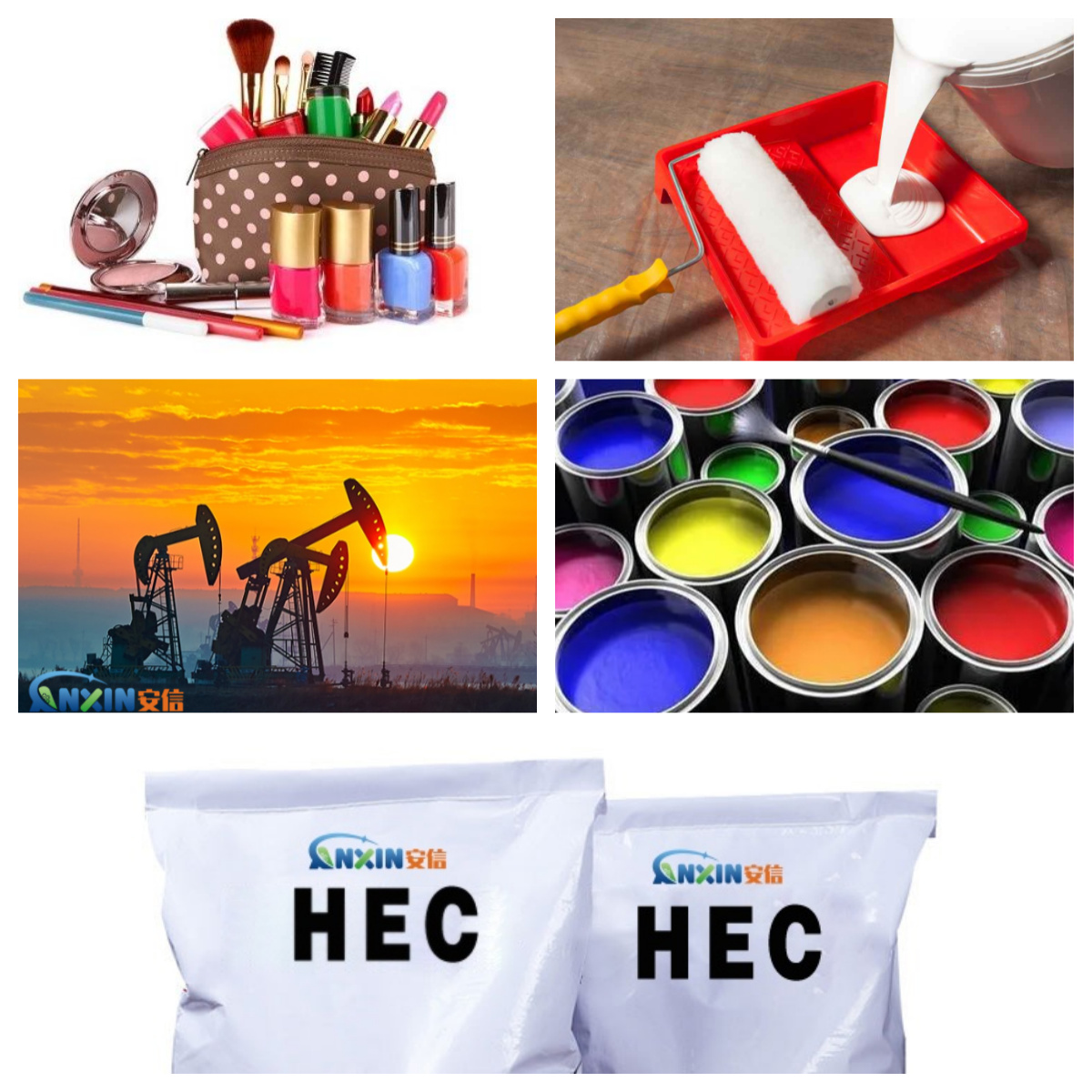Hydroxyethyl cellulose (HEC) is an important non-ionic water-soluble polymer material, which is prepared by treating natural cellulose with alkali and reacting with ethylene oxide. As a multifunctional, high-performance thickener, stabilizer and film-forming agent, HEC has been widely used in the coatings industry. Its excellent rheological properties, good biocompatibility and stable chemical properties make it an indispensable key component in modern coating formulations.

1. Basic properties of HEC
HEC has good water solubility and can be quickly dissolved in cold or hot water to form a transparent and stable colloidal solution. Its solution viscosity is greatly affected by factors such as solution concentration, temperature, and shear rate, and exhibits typical pseudoplastic flow behavior (i.e., shear thinning characteristics). In addition, HEC has good stability in a wide pH range (2–12), strong tolerance to electrolytes, and is not easily degraded by microorganisms (preservatives are usually added to enhance storage stability).
The main performance advantages of HEC include:
Thickening effect: Increase the viscosity of the coating system and improve the construction performance of the coating.
Rheological control: optimize the sag and leveling properties of the coating.
Water retention: prevent water from evaporating too quickly during construction and improve film quality.
Stability: maintain the stability of the formula under different environmental conditions.
Dispersibility: assist pigments and fillers to disperse evenly and prevent precipitation and flocculation.
2. Application of hydroxyethyl cellulose in the coating industry
In the coating industry, especially in the field of water-based coatings, HEC is widely used, mainly in the following aspects:
(1) As a thickener
HEC can effectively increase the overall viscosity of the water-based coating system and give the coating good thixotropy. The appropriate amount of HEC can prevent the coating from sag during brushing, roller coating or spraying, and help improve the fullness and uniformity of the coating film. In addition, the shear-thinning properties of HEC enhance the fluidity of the coating when external force is applied (such as brushing, spraying), and the viscosity is restored when it is stationary to prevent sag.
(2) Rheological property adjustment
Rheology is one of the important indicators of water-based coating performance. HEC adjusts the yield stress and flow curve of the coating to achieve the best flow and spreading characteristics under different construction methods. Especially in high-solid content and high-viscosity formulations, HEC can provide excellent construction feel and leveling, improve construction efficiency and coating quality.
(3) Stabilizer and dispersant role
In the coating formulation, the stable dispersion of pigments and fillers is crucial to the storage stability and coating quality of the coating. HEC can form a protective layer on the surface of the particles to prevent the aggregation and sedimentation of pigment particles. At the same time, by increasing the viscosity of the system, it further slows down the sedimentation rate of particles, thereby improving the storage stability and color uniformity of the coating.
(4) Optimization of water retention and film-forming properties
HEC has excellent water retention capacity. It can prevent rapid evaporation of water during the construction process, which is beneficial to the dispersion of pigments, film-forming continuity and the improvement of the final coating performance. Especially when applied on high temperature, dry or porous substrates, HEC can significantly improve the appearance and smoothness of the coating.
3. Key factors affecting HEC performance
In specific applications, the performance of HEC is affected by the following factors:
Degree of substitution (DS) and molar substitution (MS): DS represents the number of hydroxyl groups substituted on each glucose unit, and MS represents the average number of hydroxyethyl groups introduced per glucose unit. Generally, the higher the DS value, the better the solubility of HEC; the higher the MS value, the better the salt resistance and temperature resistance.
Molecular weight: The higher the molecular weight, the stronger the thickening effect of HEC, but the dissolution time is also correspondingly prolonged. Different application scenarios (such as wall coatings, industrial coatings) have different requirements for molecular weight.
Surface treatment: In order to improve the instant dispersibility of HEC in cold water, some HEC products are surface treated so that they can be quickly dissolved in cold water and reduce the agglomeration phenomenon formed during dissolution.

4. Application examples
In architectural coatings such as interior wall latex paint and exterior wall weathering paint, HEC is used as the main thickening and rheology control agent, which not only improves the smoothness of construction, but also enhances the anti-sagging and decorative effect of the coating. In the fields of industrial coatings, wood coatings, printing inks, etc., HEC is also widely used due to its good stability and compatibility.
Hydroxyethyl cellulose has become an indispensable and important auxiliary agent in the formulation design of water-based coatings due to its excellent comprehensive properties such as thickening, rheology control, water retention and dispersion stability. With the increasingly stringent environmental regulations and the growing demand for water-based coatings, the application prospects of HEC in the coatings industry will be broader. In the future, the development of HEC products with better solubility, better weather resistance and stronger functionality will become one of the important directions of technological innovation in the coatings industry.
Post time: Apr-30-2025